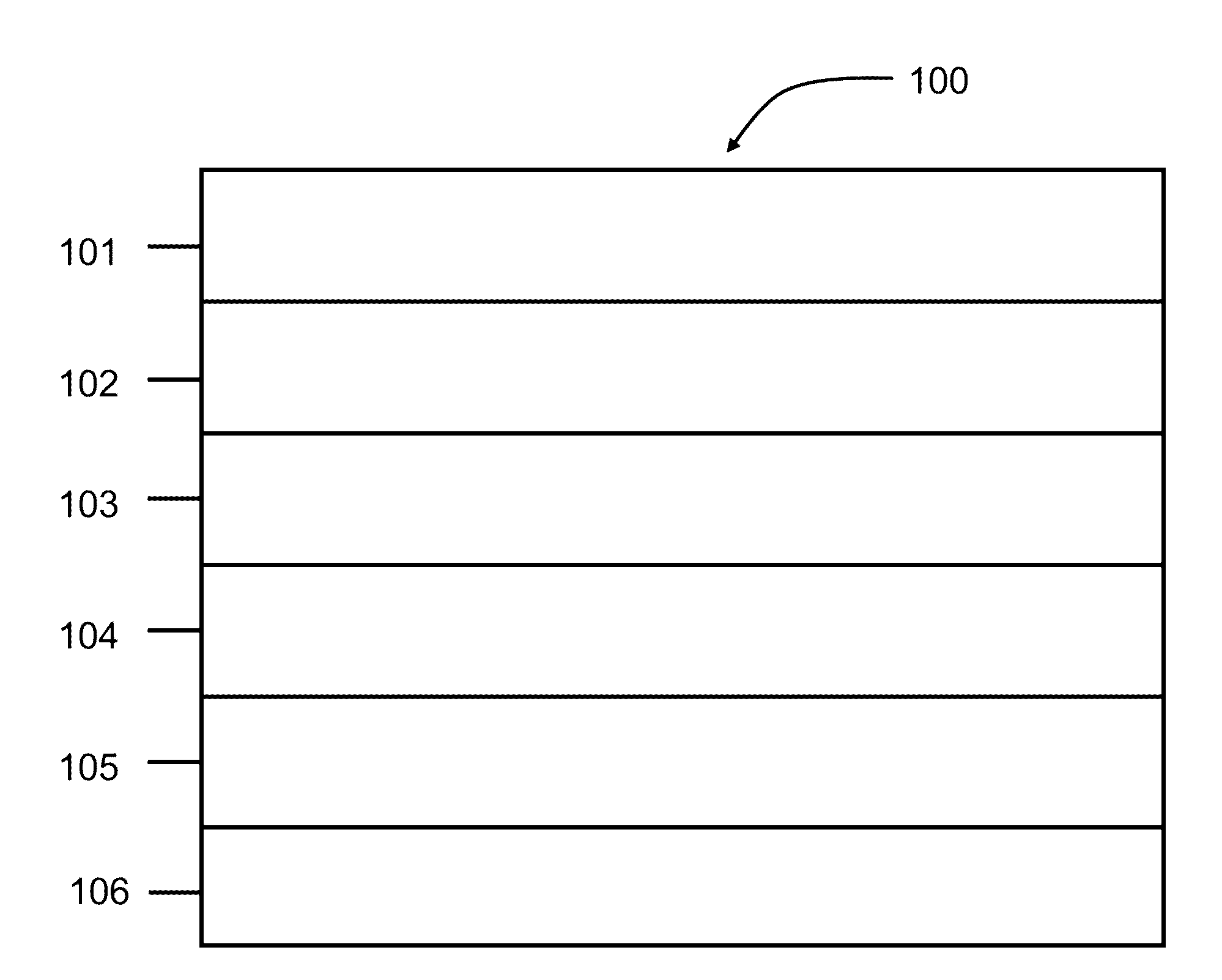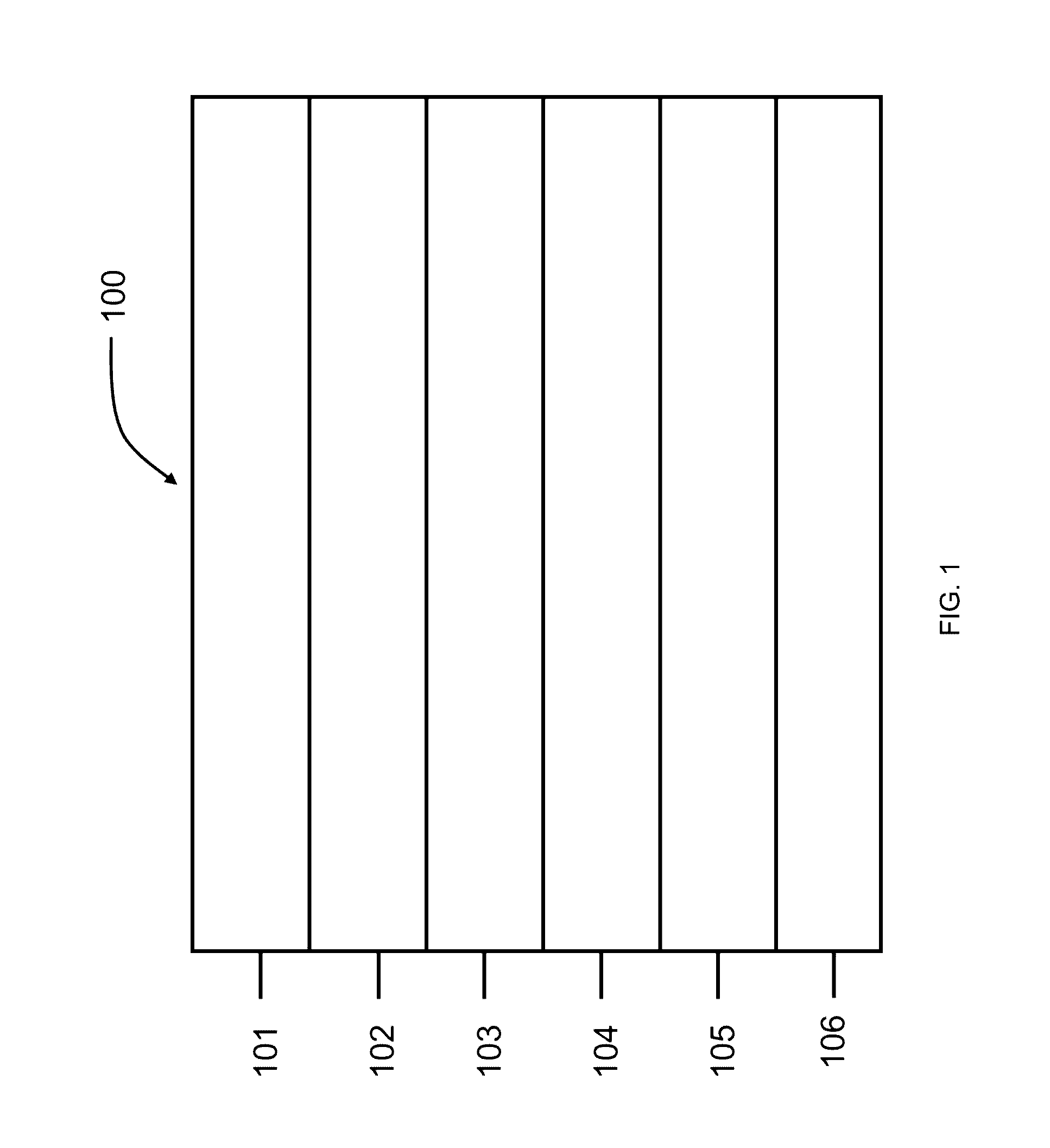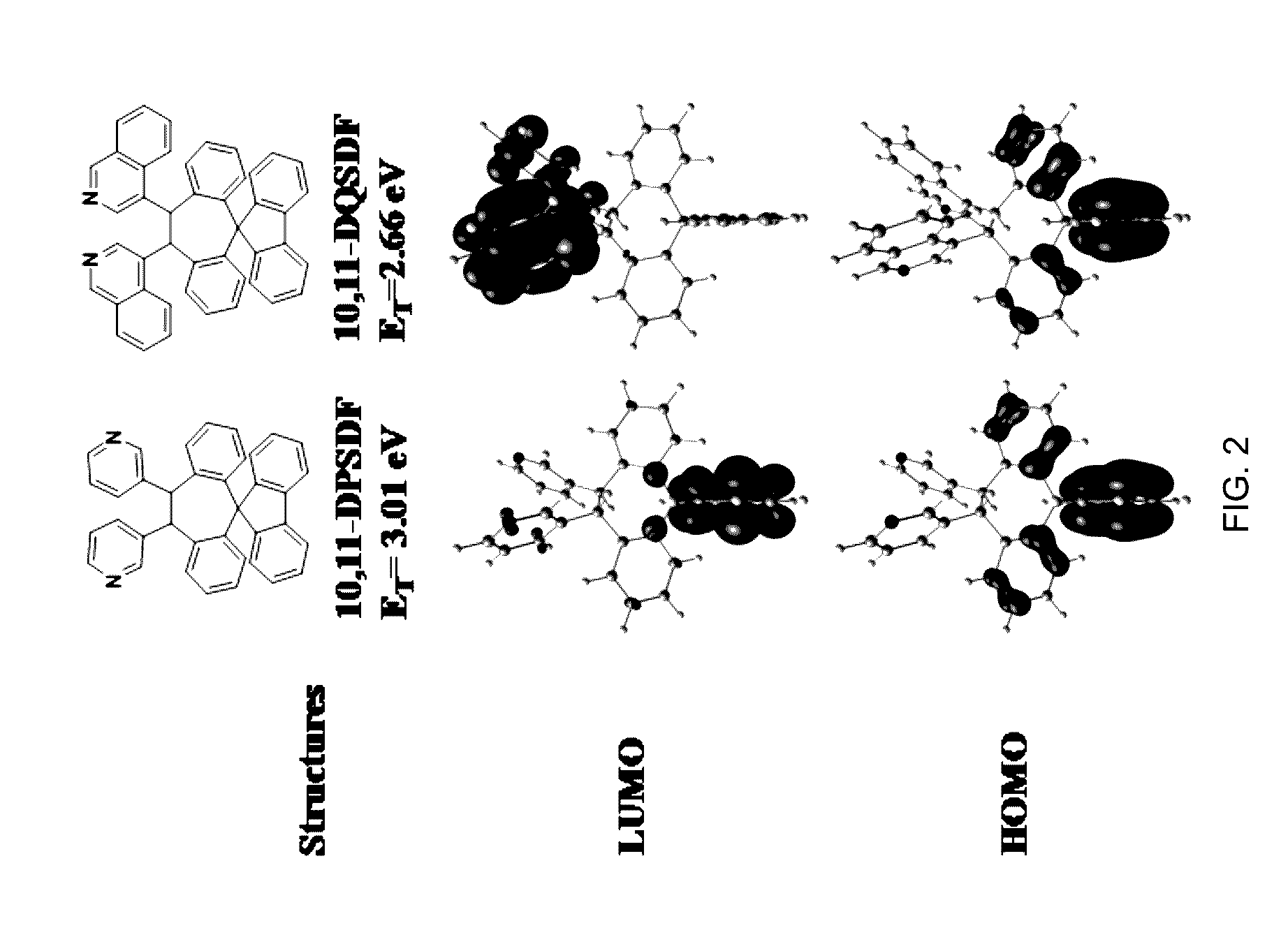Dibenzosuberane-based electron-transport materials
- Summary
- Abstract
- Description
- Claims
- Application Information
AI Technical Summary
Benefits of technology
Problems solved by technology
Method used
Image
Examples
example 1
Preparation of 10,11-di-3-pyridinyl-spiro[(10,11-dihydro-5H-dibenzo[a,d]cycloheptene-5,9′-fluorene)] (10,11-DPSDF)
[0181]
[0182]To 9-dibenzosuberone (3.0 g, 14.4 mmol) was added bromine (6.9 g, 43.2 mmol) in dichloro-methane at 0° C. under nitrogen atmosphere. After being stirred for 4 h, water and dichloromethane were added. The organic phase was separated, washed with brine solution, dried over anhydrous MgSO4, filtered and dried to remove the solvents. Purification by recrystallization with ethanol gave 10,11-dibromo[(10,11-dihydro-5H-dibenzo[a,d]cycloheptone)] as a white solid. Yield 88%. 1H NMR (CDCl3, 300 MHz) δ 8.13-8.11 (d, 2H), 7.62-7.50 (m, 4H), 7.45-7.43 (d, 2H), 5.82 (s, 2H).
[0183]To a 250 mL two-necked flask was placed a solution of 2-bromobiphenyl (1.0 g, 4.29 mmol) in THF (20 mL). The reaction flask was cooled to −78° C. and n-butyllithium (2.5 M in n-hexane, 2.23 mL) was added dropwise slowly. The whole solution was stirred at this temperature for 2 h, followed by the ...
example 2
Preparation of 10,11-Di-3-quinolinyl-spiro[(10,11-dihydro-5h-dibenzo[a,d]cycloheptene-5,9′-fluorene)] (10,11-DQSDF)
[0185]
[0186]A mixture of 10,11-dibromo-spiro[(10,11-dihydro-5H-dibenzo[a,d]cycloheptene-5,9′-fluorene)] (1′) (1.0 g, 1.99 mmol), quinoline-3-boronic acid (0.75 g, 4.38 mmol) and tetrakis(triphenylphosphine)palladium(0) (5 mol %) in 20 mL of tetrahydrofuran was refluxed under argon for 12 h. To the reaction mixture was added a solution of potassium carbonate (2 M, 20 mL) dropwise slowly. After being cooled to ambient temperature, the reaction mixture was extracted with dichloromethane and water. The organic layer was evaporated with a rotary evaporator. The product was purified by column chromatography using ethyl acetate and n-hexane mixture (90:10) and a white solid product was obtained. 1H NMR (300 MHz, CDCl3, ppm): δ 9.3 (s, 2H), 8.47 (s, 2H), 8.20-8.17 (d, 2H), 7.97-7.94 (m, 10H), 7.81-7.76 (m, 10H), 7.66-7.61 (d, 2H), 5.3 (s, 2H).
example 3
Preparation of 2-Bromo-spiro[fluorene-9,5′-dibenzosuberane]
[0187]
[0188]A 250 mL two-necked flask was placed a solution of 2-bromo benzylbromide (20 g, 80.0 mmol) in THF (100 mL). The reaction flask was cooled to −78° C. and n-butyllithium (2.5 M in n-hexane, 16.7 mL) was added dropwise to the stirred solution. After that, the resulting mixture was gradually warmed to ambient temperature overnight and quenched by water (100 mL). The mixture was extracted with ethyl acetate. The combined organic layers were dried over MgSO4, filtered and evaporated under reduced pressure and recrystallized by petroleum ether to give 1,2-bis(2-bromophenyl)ethane (4′) as a white crystalline product. Yield 91.1%. 1H NMR (CDCl3, 300 MHz) δ 7.55 (d, 2H), 7.26-7.16 (m, 4H), 7.10-7.04 (m, 2H), 3.04 (s, 4H); GC-MS(FAB) 340 ([M+H+]).
[0189]To a 250 mL two-necked flask was placed a solution of 1,2-bis(2-bromophenyl)ethane (4′) (3.0 g, 8.8 mmol) in THF (30 mL). The reaction flask was cooled to −78° C. and n-butyl...
PUM
| Property | Measurement | Unit |
|---|---|---|
| Structure | aaaaa | aaaaa |
Abstract
Description
Claims
Application Information
 Login to View More
Login to View More - R&D
- Intellectual Property
- Life Sciences
- Materials
- Tech Scout
- Unparalleled Data Quality
- Higher Quality Content
- 60% Fewer Hallucinations
Browse by: Latest US Patents, China's latest patents, Technical Efficacy Thesaurus, Application Domain, Technology Topic, Popular Technical Reports.
© 2025 PatSnap. All rights reserved.Legal|Privacy policy|Modern Slavery Act Transparency Statement|Sitemap|About US| Contact US: help@patsnap.com



